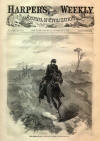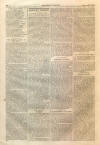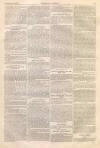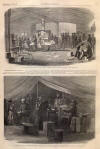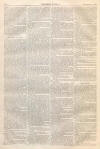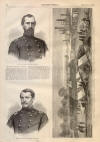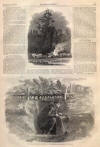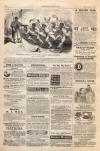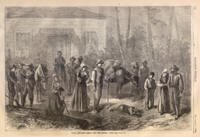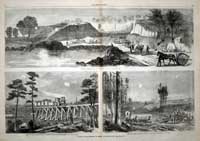Trench Warfare
|
|
This Site:
|
NOVEMBER 5, 1864.] HARPERS WEEKLY. 717 SIGNAL STATION NEAR GENERAL MEADE'S HEAD-QUARTERS.—[SKETCHED BY A. W. WARDEN.]BEFORE PETERSBURG.ON this page, and on pages 712, 713, and 716, we give illustrations of General GRANT'S Campaign. The adjoining cut represents a SIGNAL-STATION near General MEADE'S head-quarters in front of Petersburg, and overlooking the roads to the rebel lines on our left and to the lead mines. Below is a representation of a BOMB-PROOF RIFLE-PIT in front of the Second Corps. In the absence of active military operations the soldiers elaborately intrench themselves in works like the one here represented. On page 716 is an illustration of a Federal Fort on General MEADE'S extreme left, and built in the vicinity of the ruins of the rebel Colonel PEGRAM'S late residence. The illustrations given on pages 712 and 713 relate to the work going on at the Dutch Gap Canal, east of Petersburg, and to the military roads constructed by General GRANT for the use of his army. The Canal at Dutch Gap is within General BUTLER'S lines. Its object is to cut off a long bend which the James River makes around Farrar's Island, and enable our fleet to take part in the operations against Richmond. It is hoped that the canal may be more efficient than that by which it was intended to make Vicksburg an inland city, giving the Mississippi a new course. The surrender of Island No. 10, in 1862, was undoubtedly hastened by the canal which General HALLECK built, and by which he effected a passage to the enemy's rear. This canal at Dutch Gap was begun in August, and is now nearly completed. Its completion the rebels expect to be followed by a formidable advance on Richmond. Another sketch gives a view of the United States Military Railroad in front of Petersburg. This railroad connects with GRANT'S extreme left. A third sketch represents our soldiers building roads; and gives also a view of the Railroad from the Army to City Point. The railroad is built on the surface of the ground, and without grading. The sketch is characteristic of the country between the army and City Point. THE LATE MAJOR JONES.MAJOR JAMES P. JONES, the fighting Quaker, Seventh Regiment Maine Volunteers, whose portrait we give on page 716, was born at China, Maine, in May, 1835; and was killed at the battle of Crystal Springs, before the defenses of Washington, July 13, 1864. His father and mother, ELI and SYBIL JONES, are distinguished Quaker ministers, having as missionaries visited most of the United States and British Provinces, England, Ireland, France, Germany, Norway, Sweden, and Liberia in Africa. Taught in childhood the peace theories of BARCLAY and PENN, he passed the limits of his father's library, with an active and naturally martial mind, which found in ancient and modern battles for freedom and human rights more genial subjects for study. Desirous, but unable, to go to the Military Academy, with wonderful persistency he fitted himself for College, committing most of the Latin and Greek Grammars while walking the distance of two miles, between his father's house and the school. He entered the Friends College at Haverford, Pennsylvania, in 1851, and left in two years because of pecuniary embarrassments. In one year from this time we find him a Junior in Michigan University; and in 1856 he was graduated the first classical scholar in his class, and immediately elected Tutor of Ancient Languages both in his alma mater and at Haverford College. These positions he declined, and opened a family school, in which he continued until his duty to his country called him forth. In August, 1861, he went into the service as Captain. This step was opposed by his family and friends, without in the least shaking his purpose to go. He was in nearly every battle of his glorious regiment, and, a comrade tells us, was always in front when duty called. He particularly distinguished himself at Antietam in a charge made by his regiment, again in the second battle of Fredericksburg, and lastly in the battle of the Wilderness and Spottsylvania; in the former of which engagements his regiment, with him at the head, was the first that stopped the panic in the Sixth Corps ; in the latter he received a ball through his right arm. He came home, but in a few days returned to the front, having still no use of his arm, although his furlough continued three or four weeks longer. Only a few days passed after his return before the sad tidings came that he was dead, accompanied by these few words to his friends: " I die for my country, and am willing to die. All is well with me. Tell my boy never to disgrace the name of his father." Thus fell, facing the foe in front of the Capital, with an imperishable record, a brilliant scholar, a brave soldier, and an unfaltering patriot. UNION REFUGEES.WE give on page 708 a sketch representing Union refugees coming into the Federal lines. Although General SHERMAN would not permit the residents of Atlanta to remain there, yet neither he nor any other of our generals has refused to receive into his lines those flying from the hard despotism and misery which have blighted the Southern Confederacy. These refugees, whether they come from Richmond or from the Southwest, are invariably provided for in every possible way, and are not in any case compelled to enter our armies. The number of these helpless ones must continually increase as the pressure of our conquering armies bears more and more heavily on the rebel strong-holds. The rebel conscription grows daily harder and more merciless in its provisions, and there are thousands of women and children who must inevitably be left without husband or brother or father to feed or defend them, and their only hope will be in escaping to the North. The Sanitary and Christian Commissions with our armies in the field devote no small measure of their attention to these refugees, who have large claims on their charity and kindness. In many cases they have borne obloquy on account of their devotion to the old flag ; and we should receive them as heroes who have served our glorious cause. There are in the South many such, of whom we must remember that "They also serve who only stand and wait." BOMB -PROOF RIFLE-PIT IN FRONT OF PETERSBURG.—[SKETCHED BY A. W. WARREN.]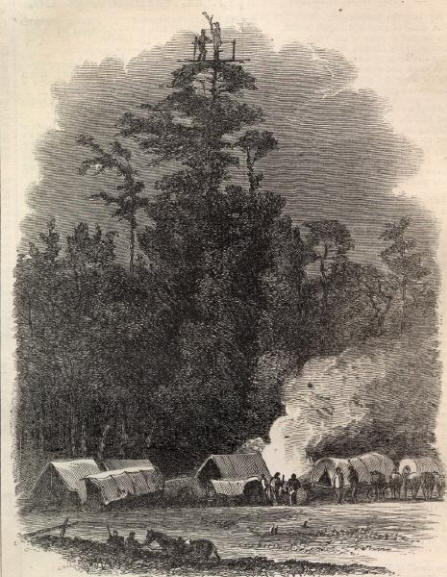 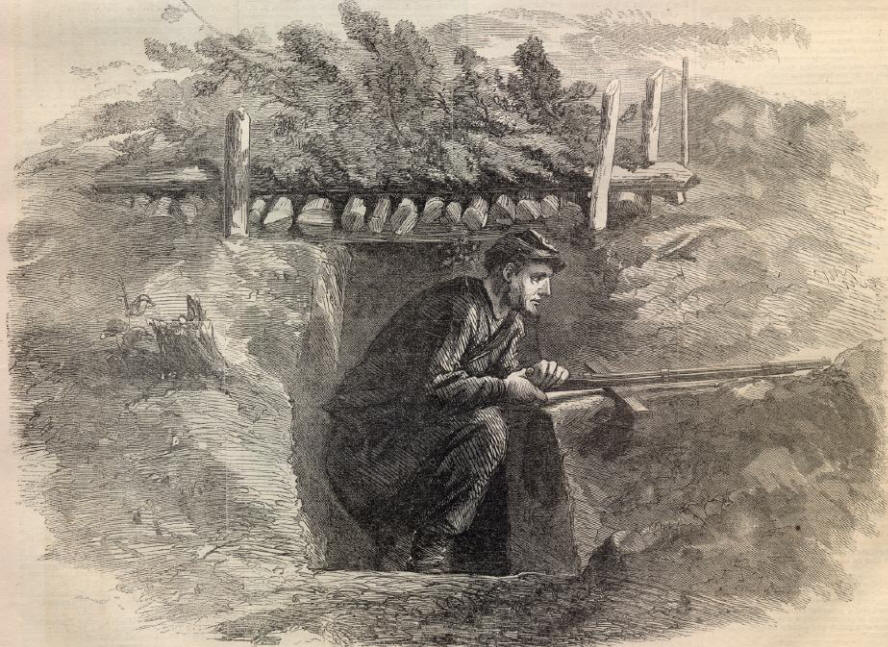 |
||||||||||||||||||||||
|
|
||
|
|
Site Copyright 2003-2018 Son of the South. For Questions or comments about this collection, contact paul@sonofthesouth.net |
|
|
Are you Scared and Confused? Read My Snake Story, a story of hope and encouragement, to help you face your fears. |
||
